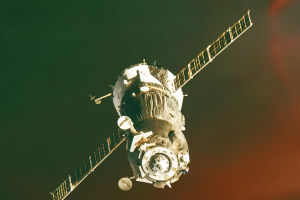The galaxy, in which our solar system resides, is a spiral galaxy known as the Milky Way. Recent research has provided insights into its structure, revealing four distinct and symmetric arms spaced approximately 4,500 light years apart. The estimated number of stars within the galaxy ranges from 100 billion to 400 billion.
The geometric center of the Milky Way lies at the intersection of its rotation axis and the galactic plane. At the heart of the galaxy, there exists a luminous spherical region with a diameter of about 20,000 light-years and a thickness of 10,000 lightyears.
This central region comprises densely packed stars, predominantly red stars with an approximate age of 10 billion years. Scientists have gathered evidence pointing to the presence of a massive black hole within this central area.
Dark matter, a non-luminous and electromagnetically non-interacting substance, is prevalent throughout the Milky Way. This mysterious substance exerts gravitational effects and plays a crucial role in the formation and evolution of galaxies. Furthermore, the enigmatic dark energy is believed to be responsible for the universe's accelerated expansion.
Currently, the scientific community widely accepts that the universe is approximately 13.7 billion years old. However, researchers have discovered indications that the Milky Way may be one of the earliest galaxies formed in the universe.
This conclusion stems from the identification of a star, named J0815+4729, within the galaxy, which possesses an age of roughly 13.5 billion years. This star is considered to be one of the earliest stars to have emerged in the cosmos.
Galactic mergers are a common occurrence throughout the universe, and the Milky Way is no exception. It is gradually approaching the Andromeda Galaxy, and in the future, the two galaxies will collide and merge, forming a larger galaxy.
During the process of galactic interaction and eventual fusion, a series of remarkable phenomena will unfold.
Galaxy Merger: The gravitational interaction between the two galaxies will cause them to draw closer over billions of years until they merge into a single, larger galaxy.
Galaxy Collision: As the two galaxies approach a certain distance, their stars, interstellar matter, and gas clouds will begin to collide. These collisions can lead to the disruption of large-scale interstellar gases, the collapse of dust clouds, and interactions between interstellar matter.
Star Cluster Formation: Throughout the collision, some stars and galaxies may be ejected, forming new star clusters or galaxies. These star clusters can exhibit distinct characteristics and compositions, providing valuable insights into the study of galaxy evolution.
Scientists endeavor to comprehend the evolutionary history of the Milky Way by observing galaxies and employing computer simulations from Earth. They study various aspects, including galactic interactions, star formation and death, and galaxy mergers, to unravel the intricacies of galactic and universal evolution.
Over the course of its existence, the Milky Way has undergone numerous transformations, such as changes in star formation and galaxy mergers. In the future, further changes will occur, including the cessation of stellar life and the consumption of black holes.
Through simulations and models, scientists predict that the galaxy will continue to evolve and develop, representing a significant frontier in the human exploration of the universe and our quest to understand it fully.


